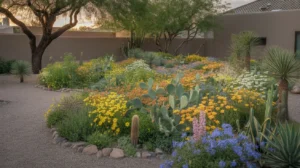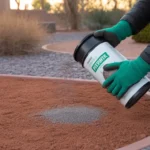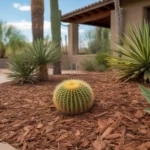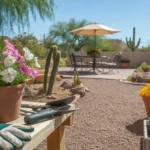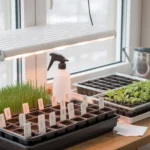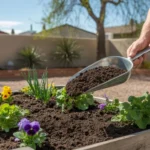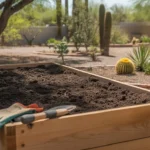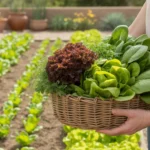As the winter chill fades and spring approaches, many Queen Creek gardeners eagerly anticipate the vibrant colors of wildflowers. However, even seasoned green thumbs can fall victim to common planting mistakes that hinder the success of their spring wildflower displays. In this article, we’ll explore the pitfalls to avoid and provide expert tips to ensure your yard bursts with a stunning array of desert blooms.
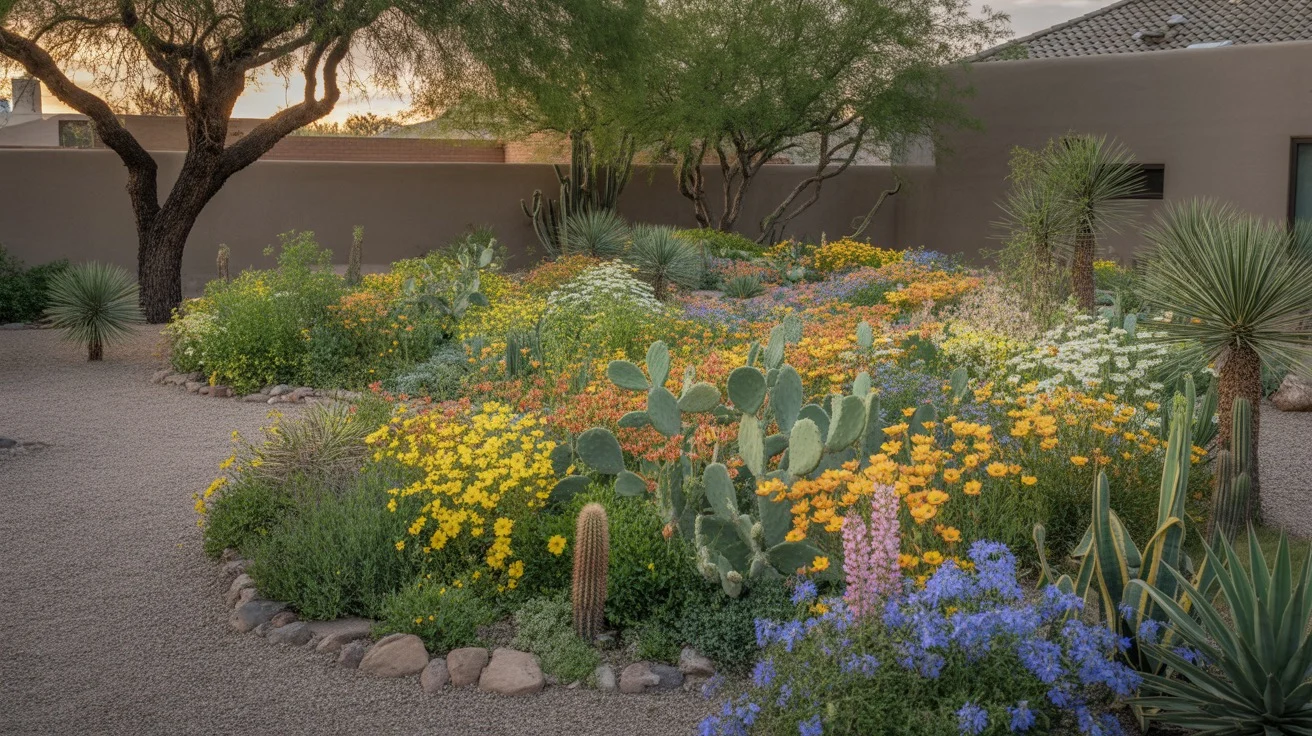
Timing is Everything: Don’t Jump the Gun
One of the most frequent mistakes gardeners make is planting wildflower seeds too early in the season. While the temptation to get a head start is understandable, sowing seeds before the soil has sufficiently warmed can lead to poor germination and lackluster results. In Queen Creek, the optimal time to plant spring wildflowers is typically in late February or early March, when the risk of frost has passed and the ground temperature is consistently above 60°F.
To determine if your soil is ready, use a soil thermometer to check the temperature at a depth of about 2 inches. If the reading is consistently in the desired range for a week or so, it’s time to start planting. Remember, patience is key when it comes to establishing a thriving wildflower patch.

Preparing the Soil: A Foundation for Success
Another common misstep is failing to properly prepare the soil before sowing wildflower seeds. While many native desert wildflowers are adapted to harsh conditions, they still benefit from a well-prepared planting site. Begin by removing any weeds or grass that may compete with your wildflowers for nutrients and moisture. Use a hoe or garden rake to loosen the top inch of soil, creating a fine, crumbly texture that allows seeds to make good contact with the earth.
Consider incorporating a thin layer of compost or well-rotted manure into the soil to improve fertility and water retention. However, avoid over-fertilizing, as this can lead to excessive foliage growth at the expense of flower production. A light application of a slow-release, low-nitrogen fertilizer should suffice.
Sowing Secrets: Depth, Density, and Distribution
When it comes to sowing wildflower seeds, there are a few key factors to keep in mind. First, pay attention to the recommended planting depth for each species. Most wildflower seeds should be sown shallowly, no more than 1/8 inch deep. Planting too deeply can hinder germination, as seeds may not receive enough light or moisture to sprout.
Another mistake to avoid is overcrowding your seeds. While it may be tempting to sow heavily for a lush display, overcrowded seedlings will compete for resources, resulting in weaker plants and fewer flowers. Follow the spacing guidelines on your seed packets, or aim for a density of about 10 to 15 seeds per square foot.
To ensure even distribution, mix your wildflower seeds with sand or fine vermiculite before sowing. This will help you see where you’ve scattered the seeds and avoid clumping. After sowing, gently rake the area to lightly cover the seeds with soil, and then water thoroughly using a fine mist or sprinkler.
Watering Wisdom: Finding the Right Balance
Proper watering is crucial for the success of your spring wildflower planting, but it’s easy to overdo it. While seeds and seedlings require consistent moisture to germinate and establish, overwatering can lead to fungal growth, root rot, and poor plant development. Aim to keep the soil evenly moist but not soggy, watering deeply and less frequently as plants mature.
In Queen Creek’s desert climate, it’s essential to be mindful of water conservation. Consider installing a drip irrigation system or using soaker hoses to deliver water directly to the root zone, minimizing evaporation and runoff. Mulching around your wildflowers with a thin layer of straw or shredded leaves can also help retain soil moisture and regulate temperature.
Embracing Diversity: Choosing the Right Wildflower Mix
Finally, be sure to select a wildflower mix that is well-suited to Queen Creek’s unique desert environment. Look for blends that feature native or adapted species, such as desert marigold, Mexican gold poppy, desert bluebells, and Arizona lupine. These plants have evolved to thrive in the region’s hot, dry conditions and will require less maintenance and supplemental irrigation once established.
When purchasing wildflower seeds, opt for high-quality, reputable sources to ensure the best possible germination rates and plant performance. Consider visiting a local nursery or garden center, where knowledgeable staff can guide you toward the most suitable mixes for your specific site conditions and desired aesthetic.
By avoiding these common spring wildflower planting mistakes and following best practices for soil preparation, sowing, and watering, you’ll be well on your way to creating a breathtaking display of color in your Queen Creek yard. As the flowers bloom and sway in the gentle desert breeze, you’ll enjoy the fruits of your labor and the satisfaction of a job well done.

